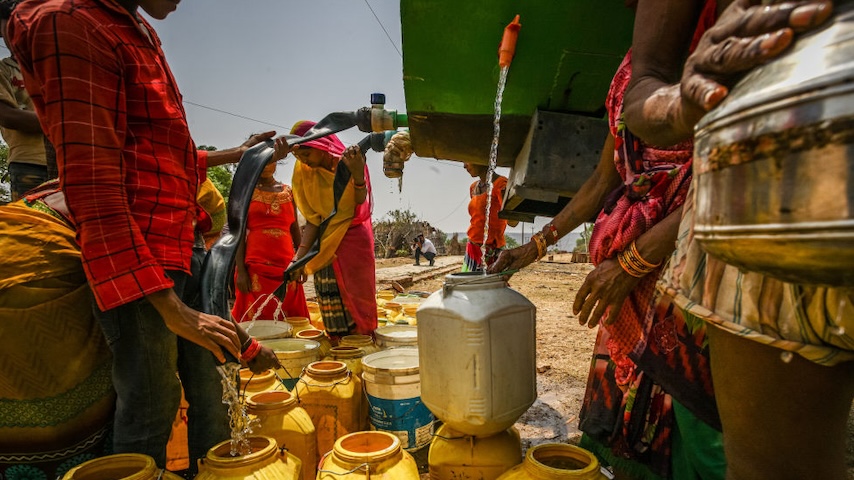People, Food, National GDPs All At Risk From ‘Growing Water Disaster’
Photo by Ritesh Shukla/Getty Images
As the last month or so has made clear, the world’s water is in all the wrong places. Yet another new report released on Thursday adds to the deluge of bad water news, this time demonstrating how a combination of mismanagement, climate change, and other issues have led to a truly grim situation.
“The world faces a growing water disaster,” wrote authors from the Global Commission on the Economics of Water, a body formed in 2022 in the Netherlands to take the most comprehensive look yet at the world’s water. “For the first time in human history, the hydrological cycle is out of balance, undermining an equitable and sustainable future for all.”
The premise behind the commission, which was chaired by a group including the president of Singapore and the director-general of the World Trade Organization, was to better understand water’s value across the world, in an effort to reframe how it is used and misused. “We can no longer count on freshwater availability for our collective future,” the authors wrote.
Drawing on work from dozens of scientists and economists, they note some grim statistics: More than 1,000 children under the age of five die every day from illnesses caused by unsafe water and sanitation; three billion people and more than half of all the world’s food production sit in places where water storage is expected to decline in the coming years; the commonly cited number of 50 to 100 liters of water per day for an average person is a drastic underestimate when adequate nutrition and consumption are included, then rising to 4,000 liters per day. In general, demand for fresh water will eclipse supply by a remarkable 40 percent by the end of this decade.
The impacts of this, unchecked, would be far-reaching. Rising temperatures along with changing precipitation patterns and declining water storage will contribute up to an eight percent decline in national GDPs among rich countries by 2050; for lower-income countries, that decline could reach 15 percent.
The report makes a number of recommendations to address the crisis, from “govern[ing] the hydrological cycle as a global common good” to the development of finance tools and institutions centered around improving water access and infrastructure. The “ultimate ambition,” the authors wrote, should be establishing a Global Water Pact aimed at stabilizing that out-of-whack water cycle.
This isn’t, of course, entirely breaking news — number six on the U.N.’s Sustainable Development Goals for 2030 is to “ensure availability and sustainable management of water and sanitation for all,” and that goal notes that 2.4 billion people live in water-stressed countries. But the apparent degree of the present and coming water catastrophe clearly needs some new approaches, so maybe the Commission’s work will spur some action.
“The global crisis of water hurts the most vulnerable first, and hardest,” the Commission co-chairs wrote in a preface to the report. “We need a sea change in how we understand and act on water.”